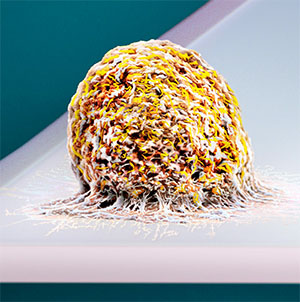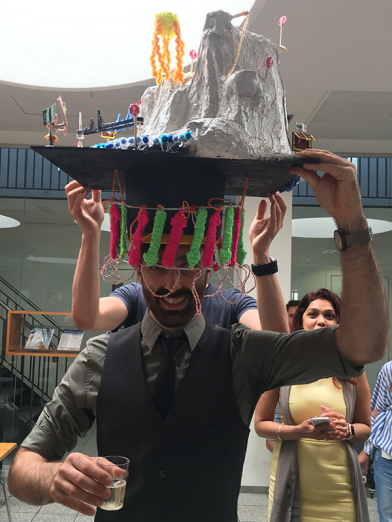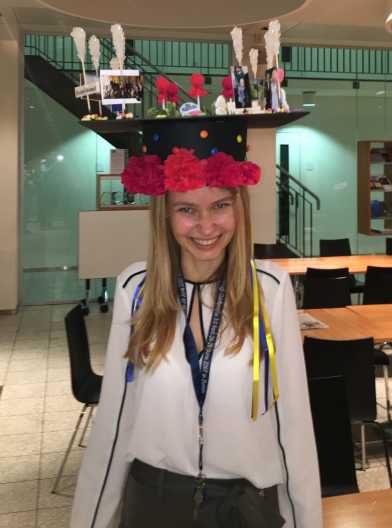2017
Award: The best science images of the year 2017
Nature has selected an image from our recent publication in Nature to be among the 10 best science images of the year 2017
Genome-scale mechanical phenotyping of mitotic cells
To divide, most animal cells drastically change shape and round up against extracellular confinement. Here, we phenotype the contribution of > 1000 genes to the rounding of single mitotic cells against confinement. Our screen identifies 49 genes relevant for mitotic rounding. Among these being disease related including Parkinson's.
Integrins sense load and signal to reinforce adhesion in less than 1 s
During adhesion initiation, fibroblasts respond to mechanical load by strengthening integrin-mediated adhesion to fibronectin (FN) in a biphasic manner. This unique, biphasic cellular adhesion response is mediated by α5β1 integrins, which form catch bonds with FN and signal to FN-binding integrins to reinforce cell adhesion much before visible adhesion clusters are formed..
How much does life weigh?

Our research and engineering team has developed a scale for measuring the total mass of life mammalian cells. It allows the weight of individual living cells, and any changes in this weight, to be determined quickly and accurately for the first time. The invention, which arises significant interest both in and outside the field of biology has been published in Nature.
It is chaperoned!

Johannes presented his fantastic PhD thesis on how outer membrane protein assisted by periplasmic chaperones can insert and fold into lipid membranes. It is all about stepwise insertion and folding pathways of beta-barrels. One more reason to open a selection of barrels of beer, wine and other tasty liquids and to party. Congrats and best wishes to Yosh who will proceed to Sweden to continue his scientific career. Best wishes!
New Paper in Nature Nanotechnology!
In this paper we review together with our scientific colleagues the AFM as an nanotechnological platform that allows biological samples, from single molecules to living cells, to be visualized and manipulated. We review the basic principles, advantages and limitations of the most common AFM bioimaging modes, including the popular contact and dynamic modes, as well as recently developed modes such as multiparametric, molecular recognition, multifrequency and high-speed imaging.
ICMSE Conference 2017
From August 27 to 29, 2017 our NCCR Molecular Systems Engineering organizes the first biennial International Conference on Molecular Systems Engineering (ICMSE) in Basel. The ICMSE focuses on the emerging field of molecular systems engineering and will feature speakers and participants from leading international research institutions.
Group Retreat 2017
Don't miss the this year's group retreat from May 11th-16th. We will meet, present and discuss ongoing and future science at the Villa La Collina/Lago di Como, Italy (www.kas.de/villalacollina/en/). This year several international scientists and colleagues will join our retreat coming from Sweden, Germany, and Switzerland.
A perfectly folded thesis!

Tania (Tetiana) perfectly passed her PhD exams today. It was the great challenge of her project to characterize how molecular interactions stabilize the state of the lactose permease (LacY) and to characterize in great detail how assisted by an insertase LacY folds into the membrane. Congratulations to Tania to her excellent scientific work!
New Paper in Nature Reviews Materials
In this Review written with our colleagues, we survey basic and advanced AFM-related approaches and evaluate their unique advantages and limitations in imaging, sensing, parameterizing and designing biointerfaces. We anticipate that in the next decade these AFM-related techniques will show a strong influence on the way researchers view, characterize and construct biointerfaces, thereby helping to solve and address fundamental challenges that cannot be addressed with other techniques.